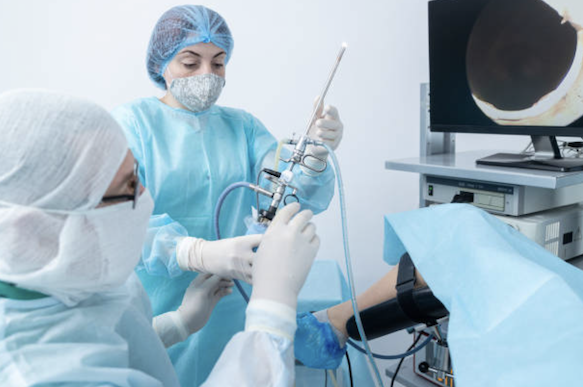A complete guide to Hysteroscopy

Hysteroscopy is a medical procedure that is generally used to investigate the health of the womb, i.e., the uterus. Doctors generally recommend Hysteroscopy to those females who experience infertility issues and extreme pain during menstruation. This helps to examine the reproductive health of the females. Apart from all the above issues, Hysteroscopy is quite beneficial in identifying fibroids. The endocrinologist takes the sample of uterine tissues during the procedure and analyzes them under the microscope to identify the underlying condition. Sometimes, Hysteroscopy is also paired with laparoscopy to find out the specific fertility issue.
Why Is Hysteroscopy Done?
Hysteroscopy is carried out to:
- To dig out the real cause of heavy periods, unexplained vaginal bleeding, extreme pelvic pain, recurrent pregnancy loss, and problem in getting pregnant.
- To analyze the conditions like fibroids and polyps.
- To remove fibroids, polyps, intrauterine adhesions etc.
How Is It Done?
A hysteroscopy is generally carried out on a day-case basis, meaning you don’t have to stay in a Hysteroscopy clinic in Chandigarh overnight. It can be carried in the doctor’s place or your home as well. You will be given general or local anesthesia depending on your certain condition. Generally, local anesthesia is given to analyze the specific condition, while general anesthesia is given if certain treatment is to be given during the procedure.
Hysteroscopy is typically a 20-30 minutes procedure, during which your physician will also use certain medications to open your cervix. They will also use a tool named speculum to keep the vagina open for a few minutes. Then they put an instrument called a hysteroscope into the uterus through the cervix. They also push gas or saline water into the uterus to look more clearly. After this, they insert a hysteroscope inside the womb. It is a long thin tube equipped with light and a camera. The pictures are sent on the big digital screen with the help of a camera and light so that specialists can spot any normalities.
What To Do Before The Procedure?
If you have allergies or any chronic medical conditions, it is important to tell your doctor before having a Hysteroscopy procedure to prevent any uncertainty. Let your physician know if you are taking any blood-thinning drugs or having heart & lung problems, or any kind of vaginal infection. And avoid going for the procedure if you have doubts about being pregnant. Apart from this, do not use any vaginal medicine or typhoon at least 24 hours before visiting the Hysteroscopy Clinic. Also, Hysteroscopy is not performed during periods, so plan it a few days before or after your menstruation date.
Is Hysteroscopy Painful?
It entirely depends on a woman-to-woman. Some women do not feel any pain, while others have mild to severe pain. However, doctors and nurses are always there for you in case you feel too uncomfortable. Don’t hesitate to tell them if you feel unbearable pain; they can stop Hysteroscopy any time. If you have fear about the procedure, it would be beneficial to talk to your doctor beforehand and know pain relief options.
This surgical procedure is generally safe and does not cause any harm to your wellbeing. Only less than 1% of patients experience infection issues after having Hysteroscopy. The risk of bleeding, reactions, injury, intrauterine scarring is pretty low. Your physician will guide you thoroughly on how to prevent these from happening.
What Happens After Hysteroscopy?
As stated above, Hysteroscopy is a small procedure; you need to stay in the hospital for a few hours only if local anesthesia is given to you. However, in the case of general anesthesia, you may be required to stay overnight. Your healthcare provider discusses all the points with you before leaving the hospital. You can return to normal life after 2-3 days of having a Hysteroscopy. Even some women join the office following the day of the surgery. There is no restriction in eating and drinking. You may experience little cramping or pain for 1-2 days after the procedure. However, there is no need to worry unless it’s heavy.
The Bottom Line-:
I hope you like the article and consider Hysteroscopy to manage irregular periods and identify infertility’s base cause.





